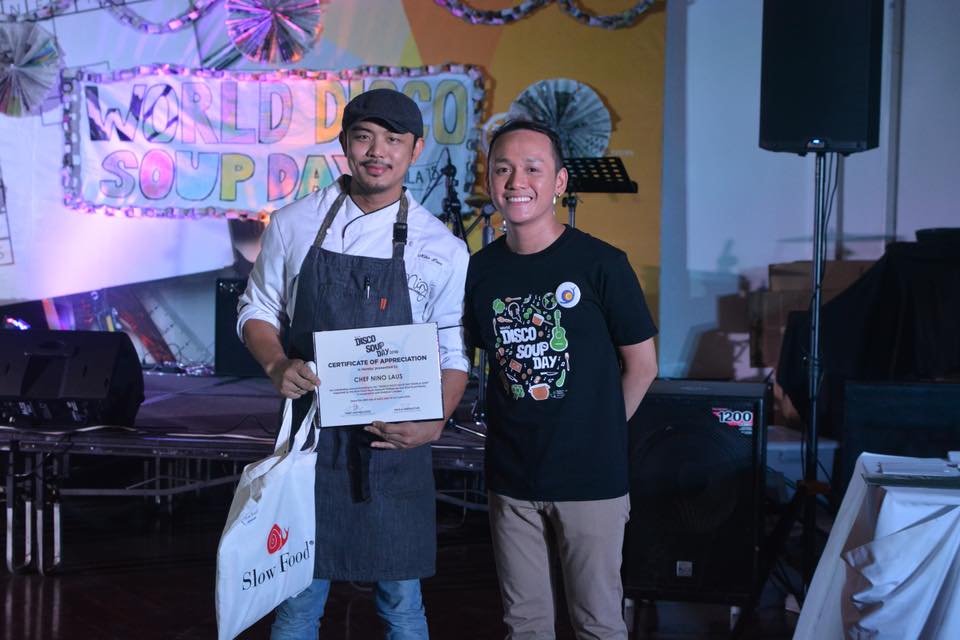Three Filipino chefs weigh in on how restaurants should mindfully reduce and manage food waste
In 2018, issues on rice shortage, higher prices of vegetables, and farmers throwing out tons of rejected tomatoes fronted the news. With problems such as natural disasters and climate change piling up on the numerous causes that threaten food security in the country, the detrimental effects of food waste have always been overlooked.
Through the lens of an environmentalist, food waste is the third biggest cause of climate change. Think about all the resources needed to produce the food you consume every day. You need land, water, oil, and manpower. This doesn’t account for the energy needed for produce to reach dining tables. Wasted food entails wasted energy.
From a social point of view, wasted food means taking away the right of another human being to consume it. Economically, food waste is lost opportunity for more profit.
“Sustainability begins with food. Everyone eats and our connection to food is a direct connection to our environment and culture,” says Jam Melchor
In the documentary Wasted!, the late food journalist and chef Anthony Bourdain mentions that he was trained to “use everything, waste nothing” in the kitchen.
“Sustainability is a complex concept, especially when it comes to the gastronomy aspect,” says Jam Melchor, chef and food heritage advocate. “It means focusing on meeting the needs of the present without compromising the ability of future generations to meet theirs.
“Sustainability begins with food. Everyone eats and our connection to food is a direct connection to our environment and culture,” adds Melchor.
According to Niño Laus of Ninyo’s, Alamat, and Agimat Foraging Bar and Kitchen, the best way to communicate this growing problem is to teach by example. So here are pointers on what chefs and cooks can do to help solve this crisis.
Back to your roots
Filipino cooking tradition has always practiced an almost zero-waste style of food preparation. Nose-to-tail cooking is one of them. Through time, Filipinos have thought of creative ways to cook every part of the pig and chicken. However, there are several techniques that Filipino ancestors have used for centuries. Kalel Chan of Raintree Group suggests to practice smoking, drying, and pickling to preserve all kinds of produce.

Melchor advises to look at other resources. “Eating insects have been part of our local food culture. Pampanga has an abundance of rice fields, making frogs and crickets a common sight in the region. This is why it’s not surprising that they cook and eat these critters. The French may be known for eating frog’s legs, but the Kapampangans don’t waste anything and eat the whole frog, stuffing it with some ground pork then deep frying it (called betute). As for the crickets (calledcamaru), they fry these small insects and cook them adobo-style.”
Make the most of ugly
According to Melchor, a change in mindset is vital in creating a zero-waste kitchen. “Try not to look at food as an endless supply,” he says. Food waste could be anything from trimmings of meat to unwanted vegetable stalks and overripe fruits. Or even over-purchased food and over-prepared mis-en-place. Every chef is pushed to think of more creative ways to prepare and utilize these resources.
“Invest in equipment as simple as a dehydrator. You can dehydrate almost anything, like roots, stems, meat trimmings, and fruits before they go stale. It brings both creativity and sustainability to the kitchen,” says Laus. “If you have fish bones or any meat, turn them into concentrated stock and freeze it for future needs,” Chan adds.
“Invest in equipment as simple as a dehydrator. You can dehydrate almost anything, like roots, stems, meat trimmings, and fruits before they go stale. It brings both creativity and sustainability to the kitchen,” says Niño Laus
A more organized kitchen is also a more efficient one. Excess purchases and overlooked produce in the storage could be avoided with proper planning and coordination. Another tip from Melchor is to get imperfect ingredients that are perfectly edible. “Save yourself some money as some suppliers and market vendors give special discounts.”
Think outside the kitchen
“Be mindful of the hard work every farmer and fisherfolk put into their product just to sustain our growing needs in the industry,” says Chan.
Laus consistently collaborates with Kalel Demetrio, mixologist and co-partner in Agimat Foraging Bar and Kitchen, to find new ways to use something not only for food but also in drinks. “I practice this in my restaurants in hopes of inspiring others and showing both guests and people in the food and beverage industry that it is possible to do.”
“We should continue to work together and take something that’s ugly and imperfect using culinary skills and techniques to transform it into something wonderful and feed hungry people,” Melchor says. “Let’s continue to fill bellies instead of bins.”